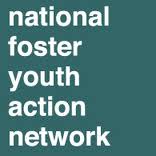 I think having a magazine out about foster care is such a good recognition method. Slowly the distribution of “Foster Focus” can increase and bring awareness to more communities. A magazine talking about the issues presented, as well as advertising proposals and programs available is needed.
I think having a magazine out about foster care is such a good recognition method. Slowly the distribution of “Foster Focus” can increase and bring awareness to more communities. A magazine talking about the issues presented, as well as advertising proposals and programs available is needed.
Anyone can subscribe to it, 12 magazines for $25.
This is the “about page” on their web site.
Judges, lawyers, caseworkers, advocates, foster parents, adoptive parents, foster care alumni, guidance counselors, teachers, principles and current foster youth all read Foster Focus. The go-to source of foster care news and information for anyone involved in anyway with the foster care industry.
Foster Focus is a monthly magazine dealing exclusively and entirely with the Foster Care Industry. The core of the magazine are seven monthly featured sections, Anonymous Faces, Ask a Pro, Editor’s Notes, Family Adventures, Guest Speaker, What Do They DO? A nonprofit profile and Lawmakers. These sections coupled with cover stories and coverage of events focused on foster care will, in fact make for the most in depth view of the Foster Care Industry ever published. Accomplished doctors, attorneys and psychiatrists and New York Times bestselling authors make up the writing staff for Foster Focus they add credibility and project a sense of understanding to our readers. A range of stories and subjects are covered, highlights include; interviews with Country star Jimmy Wayne and From the NFL’s New Orleans Saints Jimmy Graham, exclusive stories by Dr.John DeGarmo, Rhonda Sciortino, FCAA CEO Adam Robe and Casey Family Planning CEO William Bell.
Another service offered by Foster Focus is the website, which can be viewed at http://www.FosterFocusMag.com, It has excerpts of the magazines authors and highlights of the monthly sections and allows non-subscribers the opportunity to subscribe via the internet.





